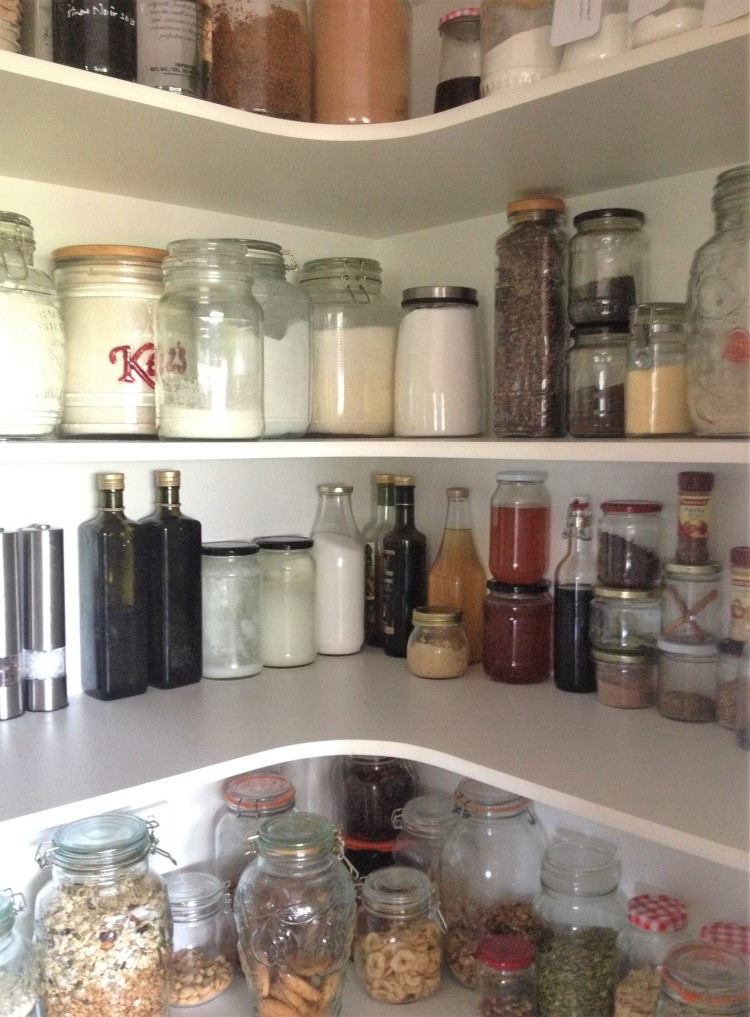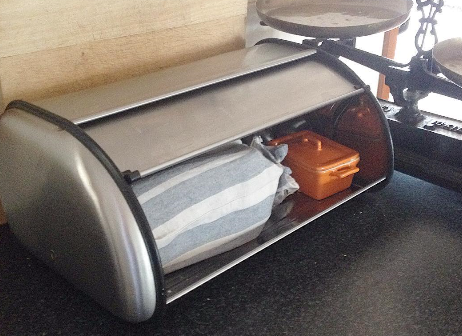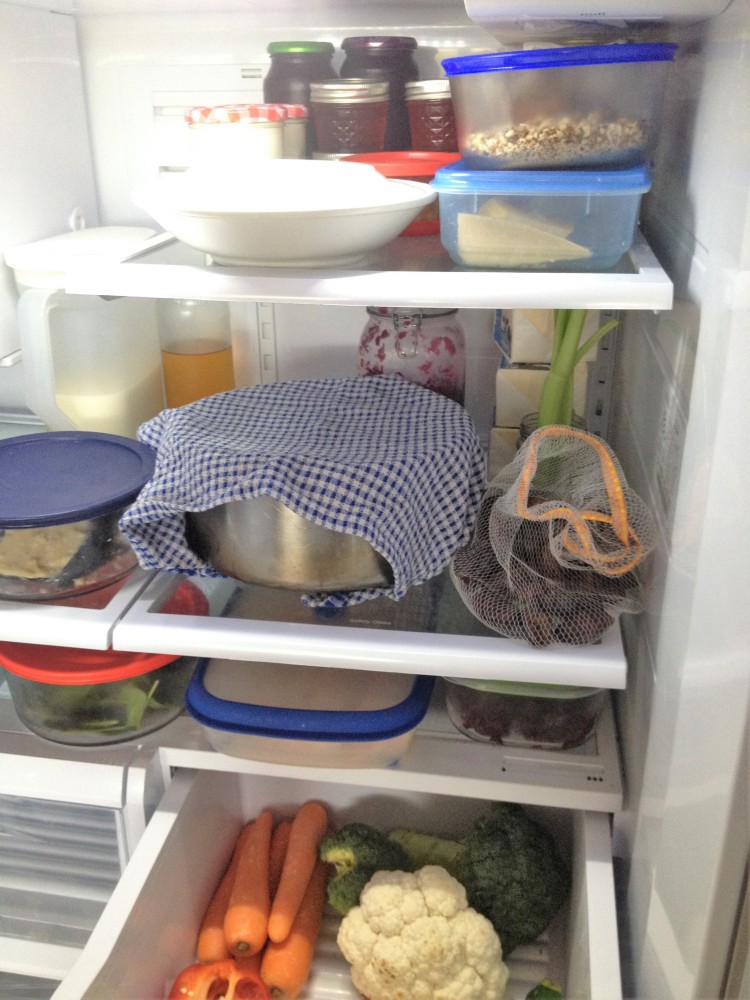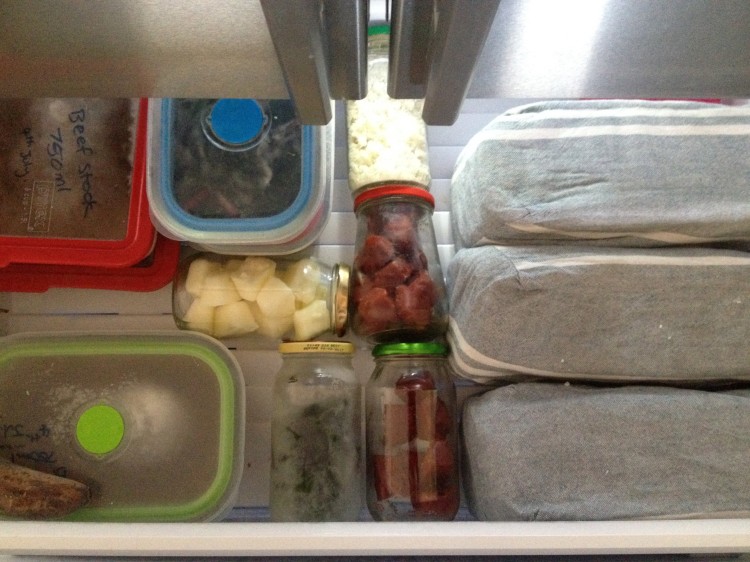Single-use plastic has invaded our lives so much that it’s hard to imagine buying and storing food without it. But every year scientists are learning more about the threats plastic poses to the environment and our health. It’s time we switched (back) to reusable, zero waste alternatives for buying and storing food.
Using your own bags, bottles, jars, and containers when shopping is key to reducing the amount of packaging waste associated with your food, but so is how you store it at home; and the way you store food has an impact on how much food might get wasted. Fortunately, these zero waste food storage techniques perform equally well, if not better than single use plastic, are easy to do, and you probably have everything you need already.
Pantry and benchtop

Glass jars
There’s something so aesthetically pleasing and deeply satisfying about a pantry full of beautiful glass jars and bottles. What’s more is that I found most of my jars secondhand or I saved them to be reused*. If you can’t find the type of glass container you’re looking for, check out Biome’s online store. I buy my dry goods in my reusable cloth bags and transfer the food into jars when I get home. For other foods like oil, honey, and soy sauce I take the bottle I want to store the food in to the shop to be refilled.
* If you don’t have glass jars or tins, use the plastic containers you already have and transition gradually to glass when they need replacing. You don’t want to add to the waste problem by ditching perfectly useable items that you will replace. If you are concerned about chemicals leaching from plastic into your food, be sure to never heat food in plastic containers or serve hot food on plastic. Glass is also preferable to plastic because it is infinitely recyclable. Only 20% of plastic is down-cycled once or twice before it ends up in landfill.
Bread tin

I buy bread in my own cloth bags (which I made from scrap fabric) and keep one loaf at a time in my bread tin, still in the cloth bag. You can get wooden bread boxes too. If you decide to make your own bread bags, just make sure the material isn’t weaved too loosely. I have used cotton off-cuts from a doona cover with success. If you are unsure just make one and try it, otherwise you could purchase one like this denim bread bag.
Baskets or wooden trays
I never buy food in plastic bags and avoid paper bags as well. Instead, I buy onions and potatoes loose and store them in separate wooden trays or baskets at home (the gases they give off can spoil each other). Uncut pumpkin sits on the shelf nearby.
Bowls
Almost all our fruit is stored on our benchtop in bowls. Apparently apples keep better in the refrigerator but we have never had issues with apples spoiling before we eat them. My children and I also can’t stand eating cold fruit. If you do have issues with fruit spoiling, here is a great article from the CSIRO about storing different food.
Refrigerator

Crisper drawers
My fridge has crisper drawers with adjustable air flow. I can keep most of my vegetables and some fruit loose in these drawers for a number of weeks, even cut fruit and vegetables. Why not check your refrigerator manual or do a little experimenting to see how well you can get your crisper drawers to work for you.
Glass jars and Pyrex containers
I store anything from cut cheese to peas, baby spinach and meat in my glassware. Again, use plastic containers if this is what you already have. Cheese, meat and small goods get put straight into my container when I shop, so it’s straight into the fridge when I get home.
Some people like to use stainless steel tubs but I prefer not to use them in the fridge because I can’t see into them. Being able to see what food you have is important for reducing food waste – at least it is in my house!
Pyrex containers have the advantage of being able to be used in the oven, fridge, freezer and microwave, which makes reheating leftovers or premade meals like soup easy.
I use a glass jar with water in it to store or revive celery. Some people do the same with carrots but I don’t find it necessary. For fresh herbs, I prefer to grow my own and pick what I need. I think everyone should be growing herbs in pots or in a garden near the kitchen door to reduce food waste and improve the flavour of their food.
Plates on top of plates
Placing a plate over a bowl or over an unfinished meal is a quick and effective way of protecting food in the fridge without cling wrap. And it’s a cinch to reheat leftovers. You can also place food like half an avocado, onion or tomato face down on a small plate to slow its deterioration.
Teatowels
If you don’t want to use a plate on a bowl you can throw a clean teatowel over it. Teatowels also come in handy if your crisper drawer doesn’t work as well as mine. I find spring onions store well loosely wrapped in a tea towel in the crisper drawer. Some vegetables do better wrapped in a damp teatowel, others in a dry teatowel.
Suction silicone lids, shower caps and beeswax wraps
Suction silicone lids, shower caps and beeswax wraps are just some of the other things you could use to store your food in the refrigerator, but they aren’t necessary if you have all of the above. Beeswax wraps are made from fabric coated in beeswax and can be moulded with the warmth of your hands around an object. I find them useful for covering cheese if I don’t have a container to use. Silicone lids and shower caps act as lids or covers for bowls, pots and plates. Beeswax wraps and shower caps can be made at home from biodegradable materials but silicone is not biodegradable and has a very low recycling rate. It’s important to consider the cradle to grave aspects of any product you choose to use, and whether it’s necessary in the first place.
Freezer

Glass jars and Pyrex containers
Again glass jars and Pyrex containers are the heroes in my freezer, but I still use plastic tubs as well. I freeze all sorts of thing like meat, homemade stock, fresh berries from a nearby farm, and vegetables from my garden in glass jars. You don’t need special glass, you just need to allow for expansion of the food inside the glass (frozen things expand which can cause glass to break), so always leave an inch free at the top of the jar. Another trick is to freeze food in ice cube trays and then place it into the jar. When it comes to things like berries, you want to freeze them in a single layer on a tray before transferring to tubs so that the bottom ones don’t get squished and stuck together.
Cloth bags
I shop for bread once a week so I freeze the extra loaves in the cloth bags I bought them in. When we finish the loaf in the bread tin, I bring another out of the freezer.
So that’s it. Storing food with zero waste is as easy as that! There’s no need to overcomplicate things, just have a go and find out what works for you. Thoughts? Do you have any tips and tricks for storing food without single-use plastic or other waste?

Hello! I’ve been transitioning to zero waste in the last couple of weeks and I found your blog, so I’d like to ask a question regarding freezing. You said you freeze your bread in cloth bags; I usually buy vegetables (tomato, peppers, broccoli, onion) which I chop and then freeze, because I live alone and if I don’t freeze those things most of them will go bad before I have the chance to eat them, plus I always like having vegetables at home to make soup without having to drive to the supermarket every two days. Do you think it would be okay to freeze all of these things (except meat and fish) in cloth bags? I made a few myself and I have a lot more fabric to use, and I’m really looking forward to ditching the ziplockbags as soon as they’re no longer good to use and make the swap, but I’m not sure it is a good method for freezing.
LikeLiked by 1 person
I still have some plastic tubs that I use for freezing some things, but for a lot of stuff I also freeze in glass jars. Bread is the only thing I’ve frozen in cloth bags. If you aren’t freezing for very long and using the food for soup, I can’t see why a short period of time in a cloth wrap would cause any harm; still I’d prefer to use the tubs and jars. Have you tried those?
LikeLiked by 1 person
I’m doing this just for a few weeks, so i’m trying to use the things I still have, even if they’re in plastic. I wanted something a bit more flexible, that would take up less room in the freezer, but I think that for now I’ll just reuse the plastic ziplock bags I have. It’s easier to break the chunks of vegetables that get stuck to each other, because of the ice, in a bag, than containers. But I really wanted to use something else later on. 🙂 Do you think vegetables and fruit would go bad in cloth bags? Thank you for answering!
LikeLiked by 1 person
If you aren’t freezing for very long and using the food for soup, etc, I can’t see why a short period of time in a cloth wrap would cause any harm but I think they would deteriorate quickly. Maybe I should do some experimenting to see how long they last. 🙂
LikeLiked by 1 person
Oh, I see, I didn’t know exactly why it wouldn’t work, I’ve never thought about using alternatives to plastic before so… I never tried! Maybe I can give it a go too, with a little bit of some vegetables, to try it out. If you try it out as well, share on your blog, please! Thank you! 🙂
LikeLiked by 1 person